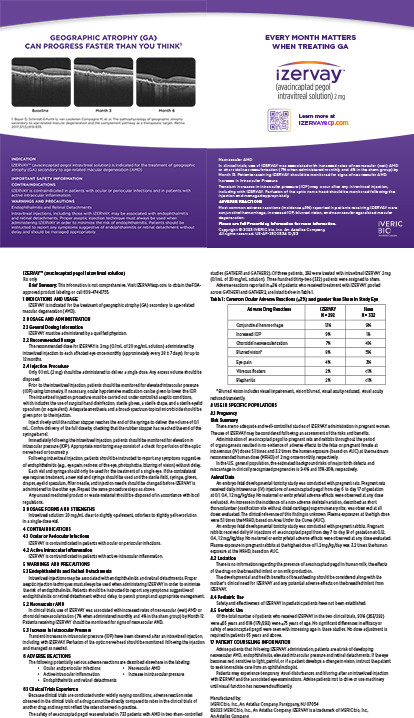Laser technology has a tremendous potential to affect the safety and efficacy of cataract surgery. Early studies have demonstrated that cataract procedures performed with a femtosecond laser use less phaco energy across all grades of nuclear density1 and that they increase refractive accuracy.2 Dozens of practices across the country have already incorporated this technology. Why are surgeons such as ourselves waiting to adopt laser cataract surgery at their centers?
COST
An obvious issue is cost. The femtosecond laser platform is a major capital investment, and therefore, much care should be put into the decision of when to purchase the technology and which of the current or soon-to-be available options should be chosen. The LenSx Laser (Alcon Laboratories, Inc.), the first commercially available unit, has provided enhanced surgical outcomes during cataract surgery by ensuring a centered and round capsulorhexis2 as well as a reduced energy requirement for nuclear removal.1 Surgeons have also reported that the LenSx Laser can assist with reducing astigmatism owing to its ability to place precise astigmatic keratectomy incisions in the peripheral cornea.3 Enhancements that would provide improved imaging and beam delivery could further help enhance the effectiveness of this laser.
LensAR Inc., OptiMedica Corporation, and Technolas Perfect Vision GmbH demonstrated their platforms' excellent imaging capabilities at the AAO Annual Meeting in Orlando, Florida. Without clinical results to review, we would not say that one unit is better than another, although they appear to provide advantages over current technology. The platforms from LensAR Inc., OptiMedica Corporation, and Technolas Perfect Vision GmbH employ a curved patient interface filled with liquid for their patient docking system, which avoids compression of the cornea. This allows for improved visualization of the internal structures of the eye, with the potential for improved precision of the femtosecond laser application.
Imaging technology
The LensAR Laser System uses proprietary technology called 3D-CSI (Confocal Structured Illumination) to image the entire anterior segment of the eye. Because the unit uses a Scheimpflug imaging technique to enhance the depth of field of the image capture, it provides a high-resolution image from the anterior portion of the cornea to the posterior capsule in a single image. The excellent contrast of the image allows the software to automatically detect the edges of all of the important structures of the eye and then plan the treatment.
OptiMedica's Catalys Laser Precision System uses optical coherence tomography similar to that employed by the LenSx platform, and it appears to provide a very high-resolution image. Additionally, OptiMedica's patient interface attempts to minimize distortion of the cornea through a proprietary technology and a graphic user interface. The Victus, formally unveiled by Technolas Perfect Vision at the 2011 ESCRS meeting in Vienna, Austria, builds on the previously mentioned technologies. It offers high-resolution, active image acquisition of the eye's anterior segment. This device is particularly interesting because it has been designed to perform laser cataract surgery as well as to create the corneal flap in LASIK/refractive surgery.
WHEN WILL IT BE TIME?
Surgeons who adopt laser cataract surgery will achieve improved visual outcomes as well as increased safety, based on a variety of reported studies.4,5 Additional research is underway and should further elucidate the impact that this technology will have on patients' care. With this in mind, the challenge facing surgeons is when to adopt this technology. Is it better to wait and let it mature? For now, we are excited to watch from the sidelines while the various manufacturers battle it out during their respective commercial launches.
Richard M. Awdeh, MD, is the director of technology transfer and innovation and an assistant professor of ophthalmology at the Bascom Palmer Eye Institute in Miami. He acknowledged no financial interest in the products or companies mentioned herein. Dr. Awdeh may be reached at (305) 326-6000; rawdeh@med.miami.edu.
William B. Trattler, MD, is the director of cornea at the Center for Excellence in Eye Care in Miami and the chief medical editor of Eyetube.net. He is a consultant to Abbott Medical Optics Inc. and LensAR Inc. Dr. Trattler may be reached at (305) 598-2020; wtrattler@earthlink.net.
- NagyZZ. Intraocular femtosecond laser applications in cataract surgery. Cataract & Refractive Surgery Today. September 2009;11(9):79-82.
- Nagy ZZ. 1-year clinical experience with a new femtosecond laser for refractive cataract surgery. Paper presented at: Annual Meeting of the American Academy of Ophthalmology; October 24-27, 2009; San Francisco, CA.
- Donnenfeld ED, Slade SG, Barsam A. Femtosecond laser created astigmatic incisions in cataract surgery with premium lens implanation. Presented at: ASCRS Symposium on Cataract, IOL and Refractive Surgery; March 29 2011; San Diego, CA.
- Naranjo Tackman R, VillarKuri J, Nichamin LD, Edwards K. Anterior capsulotomy with an ultrashort-pulse laser. J Cataract Refract Surg. 2011;37:819-824.
- Uy H, Hill WE, Edwards KH. Refractive results after laser anterior capsulotomy. Paper presented at: the Annual Meeting of the Association for Research in Vision and Ophthalmology Annual Meeting; May 5, 2011; Fort Lauderdale, FL,


